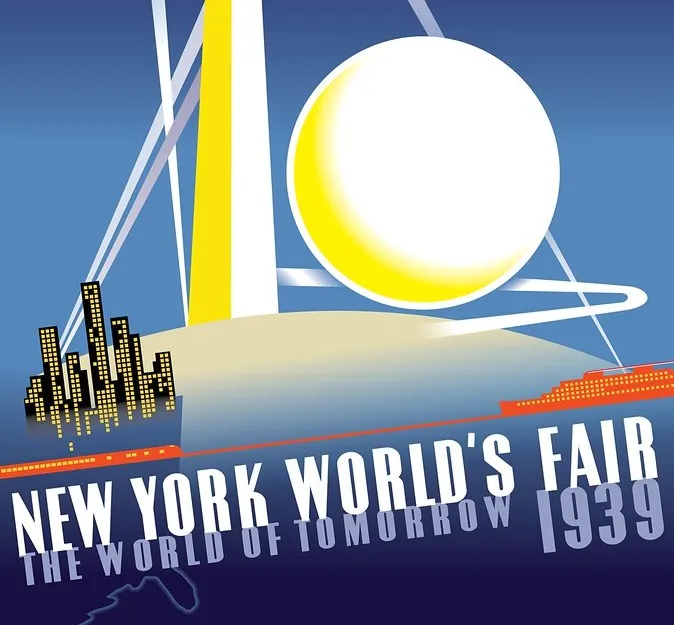Most trade shows are major benefit to the world – economically, socially and even ethically.
But, if we turn back the clock, the historical trade show industry has been no stranger to controversy. From asbestos producers to Nazi Germany, many events have drawn public outcry.
We’ve collated a list of five of the most controversial trade shows in history. They’re extreme examples, and outliers in an industry largely untouched by public controversy – but no sector can claim a perfectly clean, upstanding history.

1. 1939 – Johns Manville’s “Asbestos Man” at the New York World’s Fair
Johns-Manville, a major American producer of asbestos products, exhibited a gigantic figure clad in an asbestos suit stepping from a flaming pit. The exhibit was an attempt to show “man’s ability to control heat and protect himself from fire through the use of the ‘magic mineral’ asbestos”. Johns-Manville called asbestos a “service to humanity” and made concerted efforts to teach the public about the mineral’s “invaluable” fire-resistant traits. Johns-Manville later faced major legal and public backlash in the late 60s for concealing health risks – and was held liable for 285 employees who developed severe asbestosis in 1969. The company filed for bankruptcy in 1982.
2. 1987 – New Japanese digital technology causes upset at the Consumer Electronics Show, Chicago
In 1987, the Consumer Electronics Show ran in Chicago. The event was described in the Gainesville Sun as “the biggest and most prestigious trade show of its kind in the world”. The show attracted controversy due to the presence of digital audio tape players from South Korea and Japan – which posed a threat to the traditional analog recording industry. The Gainesville Sun article explains: “DATs … are being exhibited by every major electronics manufacturer at the show.” Michael Riggs, editor of High Fidelity magazine, who was in attendance, was quoted saying: “The recording industry has mounted an impressive lobbying effort against DATs.” Allan Schlosser, spokesperson for the Electronic Industries Association, said: “The recording industry has whipped itself up into a frenzy, ignoring the fact that they’ll make enormous profits from sales of this pre-recorded material.
3. 1937 – The Leipzig Fair under Nazi rule
In 1937, Leipzig was renamed “Reichsmessestadt Leipzig” (Imperial Trade Fair City Leipzig) by the Nazis. Before Hitler’s rise, the Spring Fair attracted 200,000 visitors including 30,000 international buyers. The event attracted negative press in the West, for obvious reasons. One New York Times correspondent wrote that “[in Germany] the old free give-and-take of trade exists no more. Commerce is used to promote hateful purposes and its normal profits are shot away in the hideous waste of war. The Fair is a monument to the moral and economic bankruptcy of Germany.” The fair became crucial to Nazi economic strategy, with southeast European countries making up 15% of participants by 1939, helping Germany avoid economic collapse while enabling Nazi mobilisation.
4. 2019 – Climate activists take on the Frankfurt Motor Show
Between 15,000-25,000 protesters gathered in Frankfurt in September 2019, many on bicycles, to protest outside the motor show. The protestors called for “an end to combustion engines and a transfer towards emissions-free vehicles”, and said they were “still angry at the 2015 ‘Dieselgate’ scandal” where Volkswagen was found to have installed illegal software that cheated emissions tests to make cars applicant. Protesters held placards reading “STOP SUV” and “we can’t replace our lungs”. They even climbed on SUVs at Volkswagen and BMW stands with “Climate Killers” signs during Chancellor Merkel’s visit.
5. 1986 – Controversy in Canada about the Native Business Summit, Toronto
The $1.4m federally-funded trade show in Toronto aimed to counter stereotypes about Native businesses being “unviable operations propped up by government funding”. Summit chairman Tony Belcourt stated they were trying to “change attitudes” and acknowledged that “Native people have bought the stereotype and we have to get past that”. The Calgary Herald described the event as “a controversial extravaganza”, in part due to the enormous cost that derived from federal funding ($3m in today’s money). Over $300,000 was spent on marketing and advertising alone. The Herald reported: “The event has been under fire for more than a year from some native and federal opposition critics who consider it a waste of money.”
The event drew dozens of Native Canadian and Métis entrepreneurs from Alberta, representing a controversial government PR effort to reshape public perception of Indigenous business capabilities.
The post Five of the most controversial trade shows in history appeared first on Exhibition News | The trade for shows..

